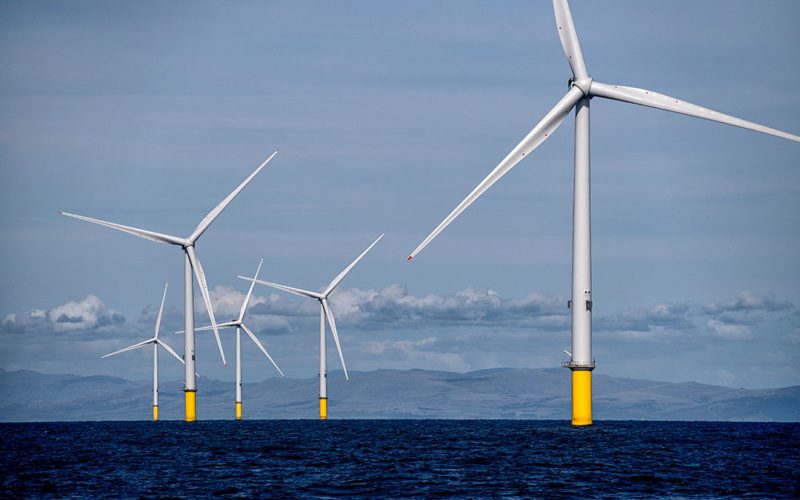(LONDON) — 2022 was another positive year for the offshore wind industry, with capacity growing by 15 percent year over year to reach 60 gigawatts (GW), Clarksons Research reported.
While rising inflation and interest rates exerted cost pressures on developers, last year saw record-breaking orders for newbuild wind turbine installation vessels (WTIVs) and construction/service operation vessels (C/SOVs), with 25 and 24 orders respectively.
Global active offshore wind capacity stood at 60 GW at the end of 2022, having grown by 15 percent across the year. Eight GW came online last year, the second-largest annual total to date (following 2021’s 19.9 GW). Capacity growth was particularly strong in Europe (16 percent) and China (15 percent).
In Europe, eight wind farms totaling 4 GW came online (over double the previous year’s total), including the 1.4-GW Hornsea 2 project off the United Kingdom, which became the world’s largest active offshore wind farm.
However, delayed regulatory timelines and cost inflation slowed project investment
last year, with $22 billion of offshore wind CAPEX committed, down 48 percent. While stronger investment is expected in 2023, the effect of inflationary pressures on project viability looks likely to remain a key theme in the near term.
2022 also saw the continuation of the ordering wave for dedicated wind vessels (WTIVs, C/SOVs and crew transfer vessels, or CTVs). A record 25 newbuild WTIV orders were placed in 2022 (up 9 percent), totaling an estimated $4.1 billion of investment (up 32 percent).
Chinese owners accounted for the majority of orders (21), ahead of a projected increase in demand toward the end of 2025, while several European owners (e.g. Cadeler) also placed orders. In addition, the sector continued to attract new entrants; for instance,
Maersk Supply ordered its first WTIV.
Similarly in the C/SOV sector, a record 24 orders were placed last year (up 60 percent). Ordering activity for CSOVs was particularly strong (20 orders). Furthermore, owners continued to focus on supporting developers to be “green through the supply chain.” For instance, all C/SOVs ordered last year will be equipped with batteries, while Windcat ordered two hydrogen dual-fuel CSOVs.
Wind vessel markets strengthened further in 2022. While global WTIV utilization
averaged 69 percent in 2022, down 14 percent following a softening of activity in China,
European WTIV utilization averaged 84 percent across the year (up 11 percent) and
a strong 93 percent across the summer.
Energy security concerns came into focus in 2022 amid the Russia-Ukraine conflict, with several European governments increasing offshore wind targets. Over the coming years, the refreshed desire for regional energy security appears likely to support further expansion of capacity (250 GW is projected to be active by 2030).

